From the GAG-line of the electric 1970s to the Stanley Cup-winning core of the 1990s, the company of 100-point seasons remains to be among the most elite players in New York Rangers history.
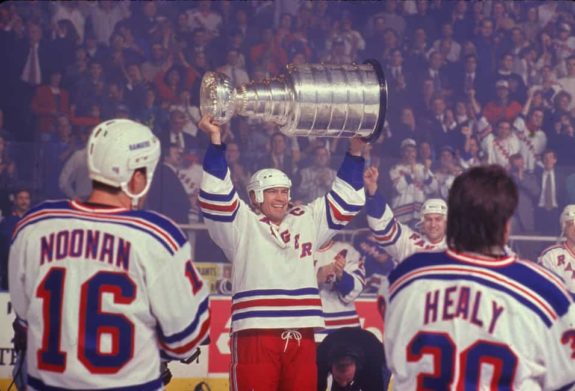
Let’s dive into all six of the legendary Rangers that have accomplished such a feat in the team’s 93-year history.
Vic Hadfield and Jean Ratelle Form the GAG Line
The Rangers of the 70s were driven by the combined performances of what is perhaps the greatest line that will ever don the diagonally crested Rangers logo. Vic Hadfield, Rod Gilbert, and Jean Ratelle spent the 1971-72 season scoring at a goal-a-game pace, thus dubbing them the GAG line and solidifying their place in Rangers history.
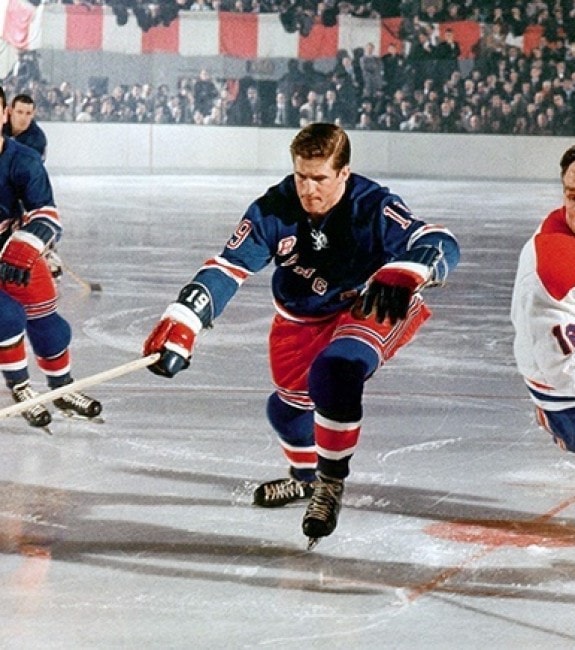
A trip to the Stanley Cup Final nearly ended a 31-year Stanley Cup drought but the trio inevitably fell short against the Boston Bruins. More likely than not, the GAG line will likely be the only time the Rangers have a forward line where two of the three had broken through the 100-point barrier.
The 1971-72 season saw Ratelle and Hadfield log 109 points and 106 points respectively while Gilbert fell three points short of the 100 point mark. Their legendary year would end up setting career highs as the only time either would break 100-points in a full season with the Rangers. The trio were the first linemates to score 40 goals each and Hadfield became the first Ranger with 50 goals in a season.
Ratelle would accomplish a 100-point season one more time in his career, during the 1975-76 season. However, he was dealt to the Boston Bruins just 13 games into the season as part of the blockbuster trade that sent Phil Esposito to New York.
The trio of Ratelle, Hadfield, and Gilbert finished the 1971-72 season third, fourth, and fifth in scoring, respectively. Unfortunately, a single errant puck shattered the GAG line towards the end of the season. After playing in 63 games, Ratelle was dealt a shattered ankle via a slap shot from Dale Rolfe. (from ‘Lundqvist isn’t alone: The injuries that altered Rangers’ history,’ New York Post, 02/07/2015) When he eventually returned for the Stanley Cup Final, he failed to log a point in six games en route to the 4-2 series loss to Bobby Orr and his Bruins. There’s an argument to be made that without the Ratelle injury, the Stanley Cup could have been in the hands of captain Hadfield by season’s end. The fact that Ratelle was able to score 46 goals and 63 assists in his shortened season is nothing short of remarkable.
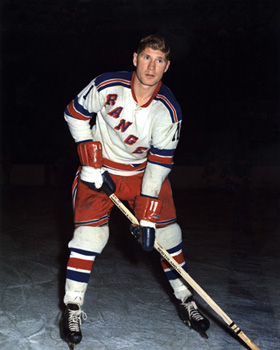
Despite the disappointing finish to the season, there’s zero dispute in the GAG line’s legacy as the greatest scoring line in Rangers history. The trio would eventually be split up in 1974 when Hadfield’s production began to fall and a brief controversial spat with Philadelphia Flyers fans led to his eventual departure in a trade to the Pittsburgh Penguins.
Ratelle was dealt shortly afterwards, which left Gilbert as the only member of the GAG line remaining. He spent his entire 18-season career with the Rangers and still holds the franchise’s all-time goals and points records. During Ratelle’s jersey retirement in 2018, he and Gilbert unveiled that the GAG line would once again be united, but this time in the rafters of Madison Square Garden as Hadfield’s number would be retired later that year.
Mike Rogers: An Overlooked Offensive Phenom
Most Rangers fans would probably read the name Mike Rogers and think “Who?” Yet, the centerman is one of the six players to ever score 100 points as a Ranger. In fact, Rogers is one of the few players in NHL history to score 100 or more points in each of their first three seasons. The only other three to do so are Peter Stastny, Wayne Greztky, and Mario Lemieux.
Quite the company.
Rogers was drafted in 1974 to the Vancouver Canucks of the NHL and Edmonton Oilers of the WHA. As an Albertan, he decided to go to the Oilers and enjoyed a season and a half there before being dealt to the New England Whalers, where he actually got to spend time with Gordie Howe.
After the WHA merger in 1979, Rogers spent two more seasons as a Hartford Whaler, scoring consecutive 105-point seasons. He was dealt to the Rangers prior to the 1981-82 season where he logged his third straight 100-point season. His 103 points led the Rangers by a wide margin— Ron Duguay and Mark Pavelich were second on the team with 76 points each. Rogers spent three productive seasons with the Rangers before being dealt to the Oilers where he finished his career.
The Leetch-Messier Dynasty Begins
After the 1990-91 postseason defeat to the Washington Capitals, the Rangers brass was dealt with a troubling decision. With a promising young goaltender in Mike Richter and a 22-year-old superstar defenseman in Brian Leetch, the Rangers needed to make a move for a top-end forward. Thus, they traded Louis Debrusk, Bernie Nicholls, and Steven Rice to the Edmonton Oilers for Mark Messier. In the very next year, both Leetch and Messier would log 100-point seasons, leading the Rangers to their best season in nearly 20-years.
The lone defenseman on this list shouldn’t come as much of a surprise. Leetch is debatably the best to ever suit up as a Ranger — he’s certainly the best defenseman in franchise history. His 103-point season as a 23-year-old in 1991-92 was the peak of his career en route to becoming the third Norris Trophy winner in franchise history. His 80 assists led all Rangers players that year, and remains the franchise’s highest assist total by a defenseman in a single season.
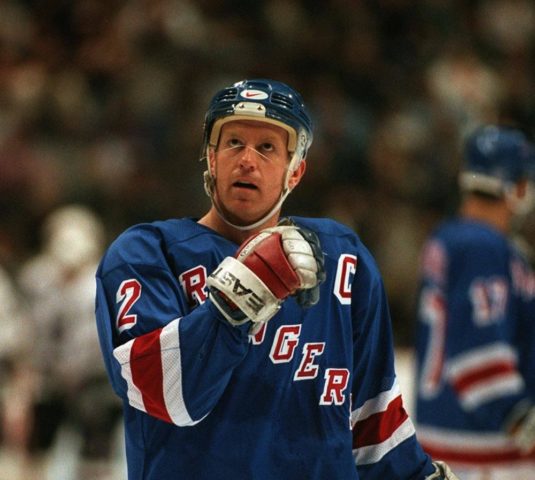
To say Messier met expectations in his first year as a Broadway Blueshirt would be the understatement of the decade. His 107 points was fifth in NHL scoring as he became only the fourth Ranger in franchise history to win the Hart Trophy and the first to win the award since Andy Bathgate in the 1958-59 season. It was his second time winning the trophy as he led the Rangers to the best record in the NHL.
The 1991-92 season marked the sixth and final season that Messier would hit the 100-point barrier while it would be Leetch’s one and only time he broke the threshold.
Unfortunately, the Rangers’ regular-season success couldn’t translate to the postseason as they bowed out in the second round to the eventual Stanley Cup champion Penguins. However, salvation was just a few years away as Leetch and Messier famously led the Rangers to a Stanley Cup in the 1993-94 season, ending a 54-year curse on the franchise. On top of being two of the most influential Rangers of all time, they’re also two of the only players to score 100 points while donning the Rangers red, white, and blue.
Jaromir Jagr Invokes a New Era
Prior to the 2005-06 season, the Rangers entered the lockout in midst of a challenging transitional period. The faces of the 1994 Cup were on the last legs of their career and additions of aging talents such as Bobby Holik, Pavel Bure, Alexei Kovalev and Martin Rucinsky left the Rangers with nothing but disappointment. They were slated to have Kevin Weekes or a next-to-unknown Henrik Lundqvist in net and their top player was a newly acquired 33-year-old Jaromir Jagr. Many expected them to be one of, if not the worst, teams in the league.
That is, until Jagr channeled his former self and shattered franchise record books in his first season as a Ranger. His 123 points in 2005-06 broke Ratelle’s previous franchise single-season point record of 109. In addition, Jagr scored 54 goals, breaking Adam Graves’ franchise single-season goal record that he set in 1993-94.
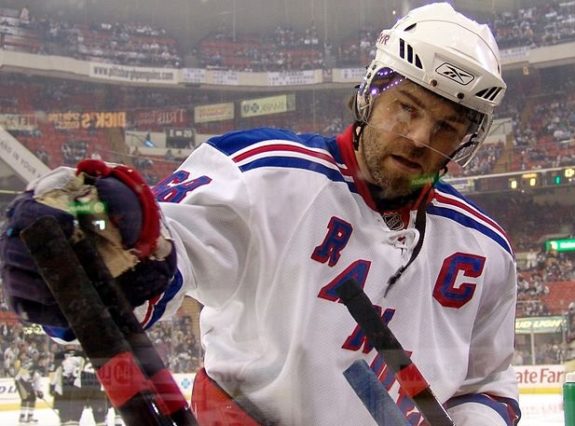
Jagr finished the season as the Ted Lindsay Trophy winner and was second to Joe Thornton in scoring. With help from the budding stars of Lundqvist, Blair Betts, Petr Prucha, Martin Straka and Michael Nylander, Jagr was able to lead the Rangers to a 44-26-12 record, their best season since 1993-94. The finished as the sixth seed in the East, but were bounced by the New Jersey Devils in the first round of the playoffs.
When Jagr became a Ranger, the franchise was nearing an all-time low. Yet, he was still confident in the young talent around him and the team’s chances to overcome expectations. Little did he know, he’d be leading the franchise into the post-lockout era of Rangers hockey.
Who’s Next?
Nearly 15 years later, Jagr’s 123-point season has remained untouched. In fact, the next highest scorer since the 2005-06 season is Jagr with 96 points in the following year. However, that streak is slated to end in 2019-20 with Artemi Panarin.

Barring any setbacks, the Rangers newest superstar is on pace for 113 points and could even challenge Jagr’s franchise record if he heats up towards the end of the season. Suddenly, the franchise single-season point record is looking far more tangible. It was once thought that Ratelle’s 109 point record was unbeatable, then Jagr came along. Who’s to say that Panarin can’t be next in line to join the Rangers’ 100-point club?
Get the latest New York Rangers news, rumors, commentary and analysis